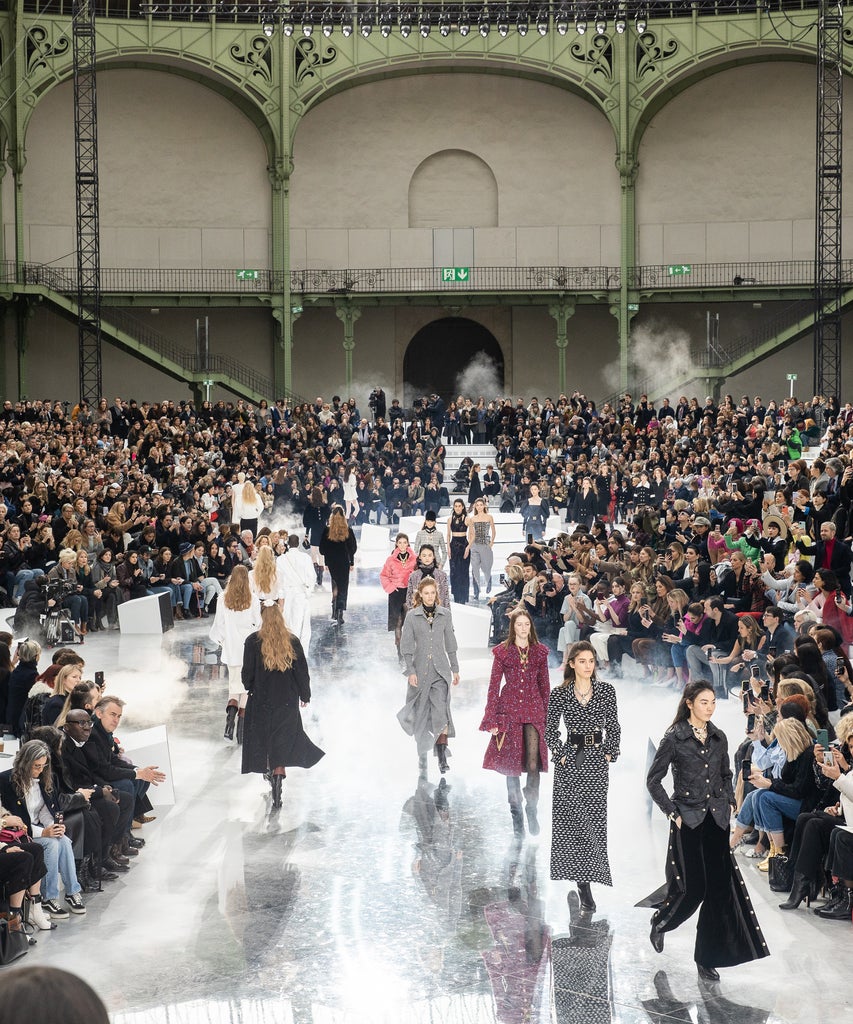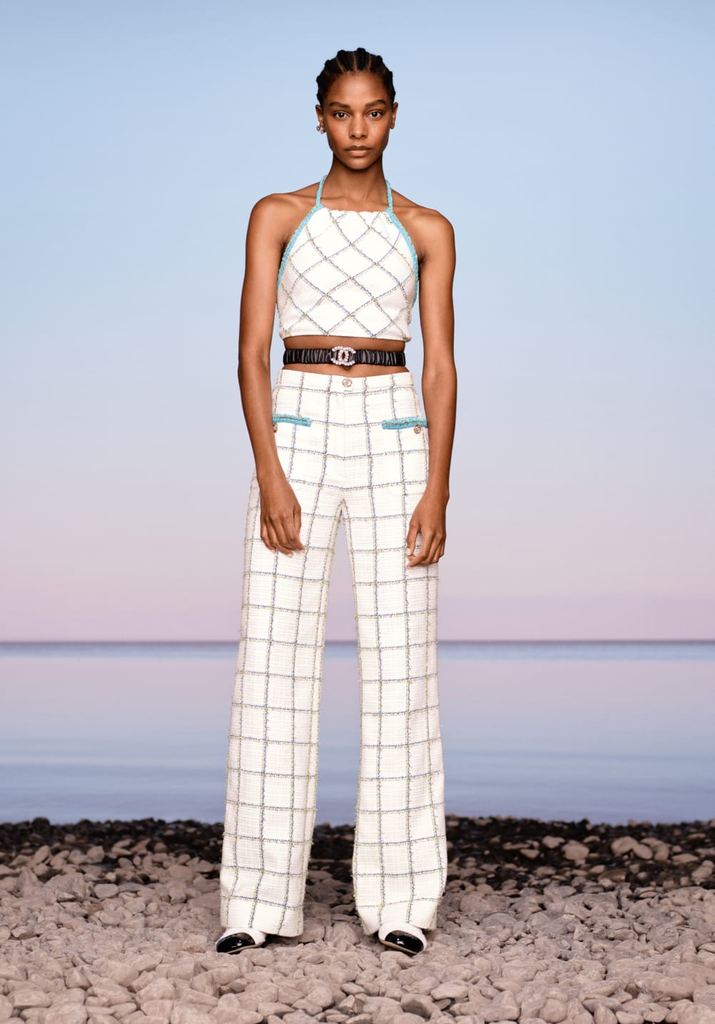
Ever since the pandemic put an end to many fashion weeks and high-profile shows around the world this year, the question of the fashion-minded has been, Will the digital fashion experience be the same as the physical thing?
First, there was a lot of speculation about what Chanel’s Resort 2021 “show” would look like. In May, in the midst of a worldwide lockdown, Chanel canceled the showing of the collection on the Italian island of Capri and decided to showcase the line virtually a month later. Given Chanel’s reputation for producing immersive shows, many hailed it as the first big digital fashion show of the season and viewed it as a potential blueprint for digital fashion experiences to come.
But following the release on June 8, NYT ran a review with the headline, “Chanel’s First Digital Show Was a Disappointment on Many Levels.” In it, Vanessa Friedman wrote that the collection was a “return to some of high fashion’s escapist failings of the past rather than a meaningful step toward the future,” and “mostly just seemed irrelevant.” Set a day after the second weekend of protests following the death of George Floyd at the hands of the police, the show indeed felt disconnected not only from the reality of racial injustices that had come to light in days leading to the show, when the brand presumably was in the final stages of releasing the collection, but even from the shelter-in-place orders of the last three months.
Instead, Chanel’s version of adapting included using fabrics the brand already had and transformative garments, with skirts that could turn into strapless dresses, shown against video and photo backdrops of a sunset setting into the Mediterranean sea and bougainvillea and cacti set against white walls. And while the sustainability efforts are of course good, and cruise collections, intended historically for travelers and jetsetters, have always been about escapism, the virtual presentation, as many fashion critics pointed out, could not match the experience of physical shows that have taken editors to places like Cuba and Dubai in the past.

“Maybe it was too much to ask Chanel to reimagine the show experience for a world in turmoil,” Friedman wrote before noting that the brand could have chosen to skip showing the season or taken more time to put on a digital presentation.
Less than a week later, the British Fashion Council (BFC) followed with its digital, “gender-neutral” answer to what was formerly London Fashion Week Men’s. In lieu of physical shows, BFC launched a digital platform that, over the course of three days, released designer diaries, conversations between creatives, fashion films, and live performances. What was notably absent here, as many pointed out, were the clothes. With the exception of a few brands, no new collections were produced as a result of studio and factory closures and supply chain shutdowns. One of the brands that did show a new collection was Marques’Almeida as part of its new reM’Ade brand. Even more noteworthy was the fact that it was made entirely from deadstock and recycled fabrics — which, as the video accompanying the news showed, the brand (as many others) had an alarming amount of sitting in a warehouse.
Archive materials have come up a lot in fashion in the last few months; the lockdown has forced many designers to use stock materials out of necessity. And while using archive fabrics doesn’t result in brand-new clothing that we’ve come to expect from a fashion week, is eight collections a year from a single brand something that we even want to go back to as consumers at this point given the fashion waste problem and a recession? In a move that should strike a chord with many consumers, London’s Teatum Jones released a film featuring members of its community talking about what it means to “re-love” clothing they already have in their closets.
The issues that have come to light during the pandemic are not new. The fashion system was flawed even prior to the pandemic, with a calendar that goes against seasons; discounting that’s damaging to brands; and a nonstop cycle where designers have no time to breathe, let alone be creative, in between collections. According to many designers who participated in LFW, the pandemic simply forced them to pause and reconsider their business models. London wasn’t alone in this. Just this weekend, Michael Kors joined Gucci and Saint Laurent in leaving the official Fashion Week calendar, and announced the brand’s plans to produce only two collections a year.
Fashion’s diversity issues were also brought up during LFW — a subject that hasn’t been tackled in a big way prior to the last three weeks (aside from a few select labels like NYC’s Pyer Moss) — when many brands have come forward in support of the Black Lives Matter movement and presented manifestos promising change in the future (should they stick to them, only time will tell). In what was undoubtedly the highlight of the entire LFW experience, instead of presenting a collection, designer Bianca Saunders created a zine that explores themes of gender identity and community. While in conversation with collaborators, photographer Joshua Woods and writer Jess Cole, Saunders talked about Black creatives and diversity in fashion.
“I am always trying to explain the Black experience, explain my experience, being this body that’s in fashion, that’s not that diverse at all,” Saunders said in response to a question about what it will take to create a sense of togetherness that the zine touched on. “I think what we individually have been trying to do is try to get other people involved. Because we can’t actually change what’s currently happening in the world if other races are not in alliance.”
This was further picked up in a conversation between Wonderland magazine’s editor-in-chief Toni-Blaze Ibekwe and celebrity stylist Solange Franklin Reed. Charles Jeffrey, too, devoted his platform to Black creatives and encouraged viewers to donate to UK Black Pride, while the University of Westminster kicked off its graduation showcase video with a demand for better representation at fashion schools and Ahluwalia’s photo project explored the designer’s Nigerian-Indian heritage and what it means to be a young mixed heritage person living in modern Britain.
Over the last few months, it’s become clear that it’s time for brands to step away from the mold and do what feels right to them as a business as well as the world we’re currently living in. In a move that garnered much praise, last month, Hanifa designer Anifa Mvuemba threw a 3D fashion show. Before the start of the show, Mvuemba, who is from Congo, released a short documentary on the issues facing the country. The collection itself was a love letter to the Central African country. “I want these pieces to tell a story of meaning. I want them to remind us to be intentional about what we create. Not for clout or for Instagram likes, but for the sake of meaning what we say by storytelling through our designs,” Mvuemba told Teen Vogue.
It’s the story behind the garment that makes it special, after all — whether it’s one about an ethical supply chain, artisans who handmade it, or materials that were given a second life at a time when the average lifetime of a garment is just three years. Going forward, it will also be brand stories that consumers will want to have access to before making a purchasing decision — how they are standing up for the injustices in the world, the practices and people behind the brand, the marginalized voices they’re amplifying, and the diversity of people and bodies that are modeling their clothes.
The last few weeks have also shown that brands (Bianca Saunders, Hanifa, Sandy Liang, etc.) are more creative than ever — do we really want to see them going back to old-fashioned runway shows, sometimes to the detriment of their finances, rather than see them express their creativity in truly unorthodox ways?
So maybe instead of saying that digital fashion weeks are not the same as physical fashion weeks, we should be calling for physical fashion weeks to change in the future. To be more diverse and inclusive both on the runway and behind scenes at the highest executive levels. To involve less travel, thus carbon emissions, to see one cruise show. To pose less of an economic hardship on independent designers who could barely afford to put on a show even prior to the pandemic. And, maybe instead of faulting designers for not having clothes to show like during LFW, we should encourage them to be more sustainable and work with what they already have, producing seasonless essentials and timeless pieces, rather than anything new.
After all, what can be more radical in fashion than making nothing at all?
Like what you see? How about some more R29 goodness, right here?
Chanel Kicks Off PFW's Last Day In Pirate Boots

No comments:
Post a Comment